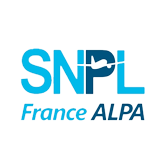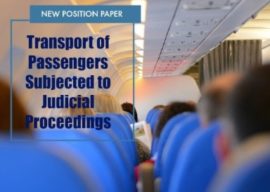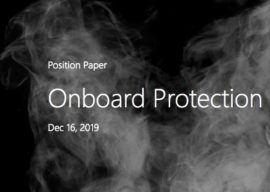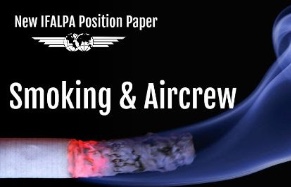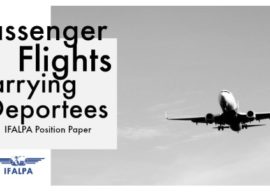
Position Paper: Transport of Passengers Subject to Judicial or Administrative Proceedings
11 décembre 2019 - It is not unusual for aircraft Operators to have to transport deportees, inadmissible persons, or persons in lawful custody. IFALPA is not opposed to this practice, however, strict guidelines should be followed to ensure that the safety and security of the flight are not compromised. In any case, the final decision on accepting such passengers and any escort onboard should rest with the pilot-in-command.
Position Paper: Onboard Protection Against Fire and Smoke
11 décembre 2019 - IFALPA believes that the results from the industry initiative on smoke and fire following the Swissair 111 accident should become industry best practice and be implemented worldwide. IFALPA believes that a follow-up initiative is necessary to develop further industry guidelines to improve safety. This follow-up programme must address the following items...
Position Paper: Air Cargo Security
11 décembre 2019 - There are many types of security controls in place at airports around the world to improve the safety and security of flights. Most of these controls include some form of physical screening and in some cases, such as passenger screening, this is the only security control in place. In other cases, however, physical screening can be complemented by other measures or applied randomly for reasons of deterrence.
Safety Bulletin: Ninoy Aquino International Airport (MNL), the Philippines
21 janvier 2020 - This Operational Notice from IATA alerts airlines of the on-going risk to aircraft operations at MNL due to unaddressed deficiencies on the airfield.
Press Release: Entry into Force of the Montreal Protocol 2014
20 janvier 2020 - Following the 22nd instrument of ratification deposited with the Secretary General of ICAO, the Protocol to Amend the Convention on Offences and Certain Other Acts Committed on Board Aircraft, more commonly known as the Montreal Protocol 2014 (MP14, ICAO Doc 10034), entered into force on the 1st of January 2020.
Safety Bulletin: New Approaches for Haneda
20 janvier 2020 - Due to the upcoming Olympics in Tokyo, Japan, there is a requirement to increase throughput at Tokyo’s Haneda airport. In order to achieve this throughput, it is necessary to introduce approaches to the previously unused approach Runways 16L&R. These runways have not been used for approaches previously due to noise concerns for the public. In order to appease the local public regarding the noise pollution, the JCAB (Japan Civil Aviation Bureau) has created RNP approaches and ILS approaches to runways 16L&R.
Position Paper: Smoking and Aircrew
11 décembre 2019 - Cigarette smoking is the single most important preventable environmental factor contributing to premature death in the world. The high morbidity and mortality rates are due to the e ects of cigarette smoke on several diseases, but primarily on lung cancer, ischaemic heart disease, stroke, and peripheral vascular disease.
Position Paper: Passenger Flights Carrying Deportees
11 décembre 2019 - There are necessary and important guidelines that crews should follow when passengers are carried who are not travelling of their own volition. Such flights often present challenging scenarios and there may be political and humanitarian viewpoints to be considered. Deportations are the result of a state judicial or administrative process. It is important to understand that Operators, Aircraft Commanders, and their crew are not involved in these decisions, nor can they be held responsible for deportees after their disembarkation at destination.
Position Paper: Carriage of Persons on All-Cargo Aircraft
11 décembre 2019 - It has come to the Federation’s attention that Cargo Aircraft Only (CAO) provisions are being used to prevent individuals from traveling on cargo aircraft when such aircraft carry Dangerous Goods (DG) not allowed on passenger aircraft. The CAO provisions allow types and quantities of DG on all-cargo aircraft because it was believed pilots of those aircraft had specific means of responding to DG incidents that are not normally available to passenger aircraft pilots.
Briefing Leaflet: Medication and Flying
11 Decembre 2019 - Even a minor illness in a pilot can cause a major problem while flying. In addition, accidents have occurred because of pilot’s disability related to disease and/or medication. Many symptoms that are negligible on the ground may worsen while flying, so in many cases the underlying illness itself is usually the major reason not to fly. Therefore, licence holders should be encouraged always to consult their AME (authorised medical examiner) before taking any medication. Quite often other physicians than AMEs show a serious lack of knowledge in the field of aviation medicine and therefore consultation with AME and not a general practitioner or other non-aviation familiar doctor is highly encouraged.
